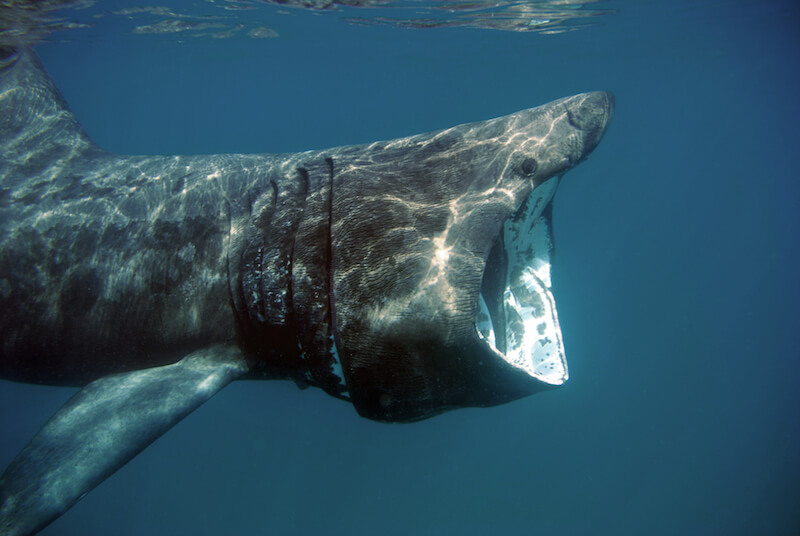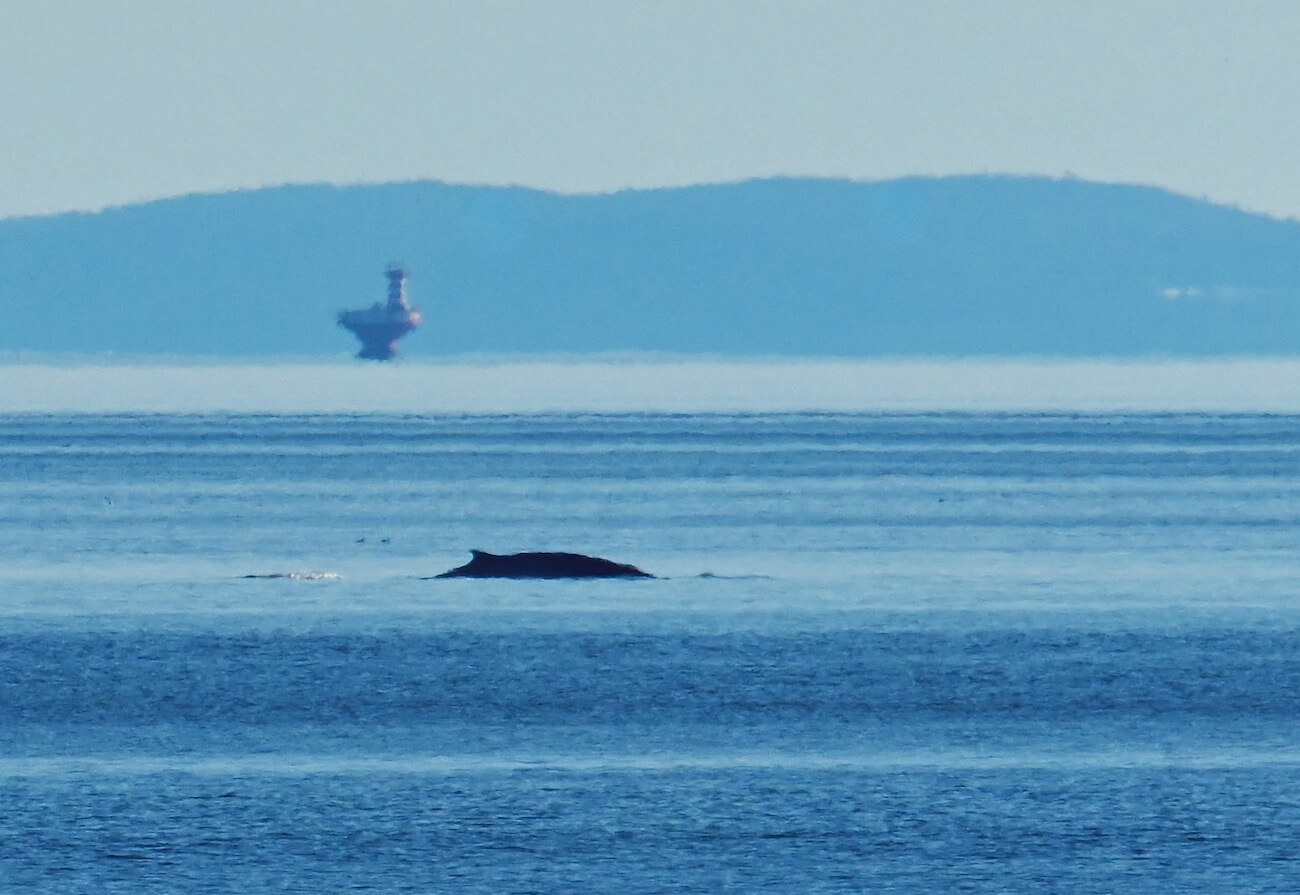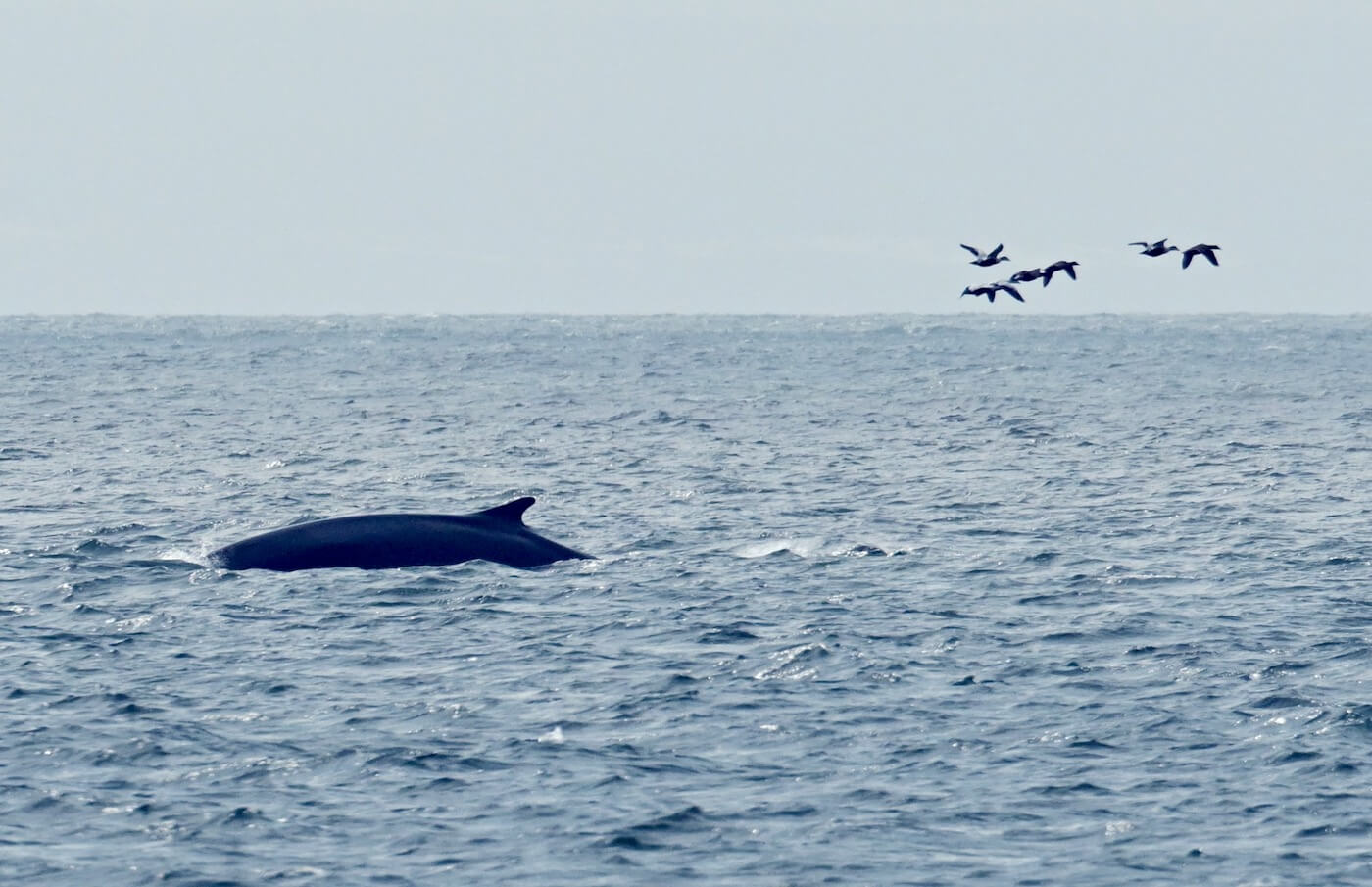Almost nonchalantly, a basking shark glides by the boat of a resident of Sainte-Thérèse-de-Gaspé. Its high dorsal fin betrays the animal lurking beneath the surface. Measuring 10 m long, the basking shark is the second largest fish in the world. It is found in the waters off the coasts of all eastern Canadian provinces. In Quebec, it frequents the Gulf and is an occasional visitor to the Estuary. Basking sharks are frequently observed off the Gaspé Peninsula and this week, they have been reported in Percé, Gaspé and in Chaleur Bay.
Like large rorquals, this imposing shark feeds on a myriad of zooplankton: copepods, crustaceans, larvae, fish eggs, etc. However, unlike cetaceans, which use their baleen as a sieve, the basking shark uses its gills. It swims with its mouth wide open and takes in water as it moves along. The water emerges through its gill slits, which regenerate oxygen in the blood, but the tiny prey are then retained by its gill rakers, comb-like structures tightly packed on each branchial arch. In just one hour and swimming at a speed of 4 km/h, a basking shark can filter up to 1,500,000 litres of water! Rorquals, on the other hand, use the engulfing technique. The blue whale, for example, in a single gulp takes in a volume of water equal to its own weight, i.e. 90 tonnes. At the end of a day, it will have ingested close to a tonne of prey.
In addition, five blue whales were observed on September 25 west of Anticosti Island by the Mingan Island Cetacean Study (MICS) team. That same day, the researchers crossed paths with about fifteen fin whales and just as many humpbacks.
In the Marine Park area, a naturalist and a captain happen upon bluefin tuna in full high flying prowess. At first they believe they’ve come upon a herd of white-sided dolphins: the animals are very fast and when they jump, their pale flanks recall those of dolphins. But when they leap back into the air again at full throttle, there is no longer any doubt about their fish-like nature: their tail is vertical and they have no blowhole on their head. Tuna are also noted in Percé and in the Magdalen Islands where they are swimming amongst other “torpedoes”, that is to say white-sided dolphins.
Humpbacks are expert aerial acrobats. On September 20, an observer aboard the Téléost discovers two individuals perform this feat – imagine, managing to get 30 tonnes out of the water – in the area between Chaleur Bay and the Magdalen Islands. Not far away from there are two right whales. These animals can also breach like minke and sperm whales. Breaching is believed to fulfil several functions: communication, a form of play for younger animals, seduction and defiance for males during the mating season, a means of congregating before migration and acrobatics to rid the body of skin parasites. In fact, it even appears that occasionally, the basking shark also makes leaps out of the water to dislodge remoras, lampreys, etc. clinging to its skin.
This map represents an order of magnitude rather than a comprehensive survey.





